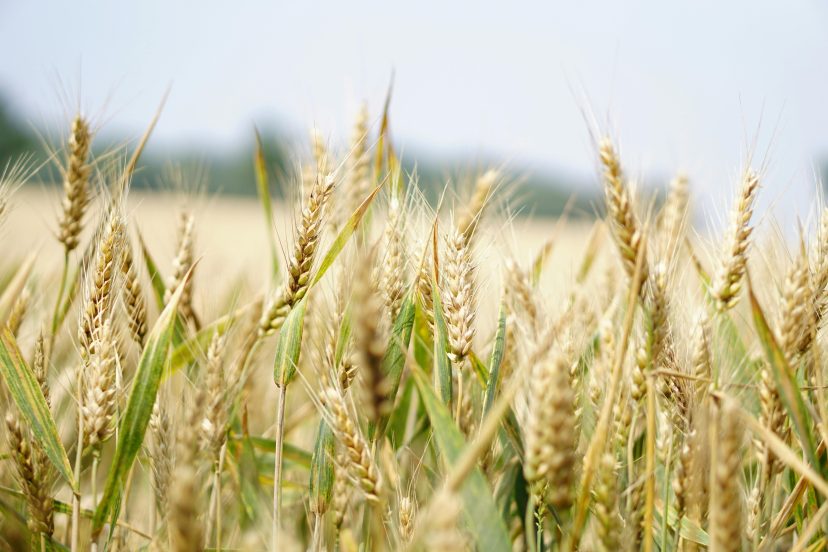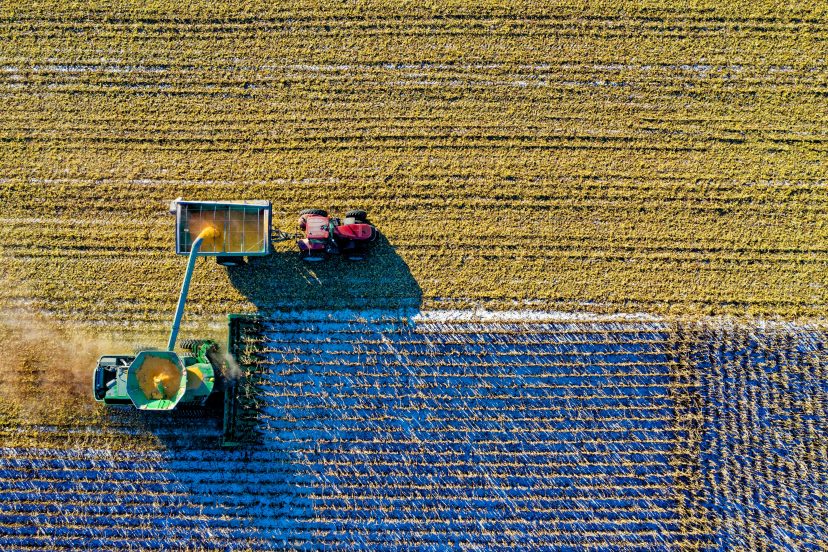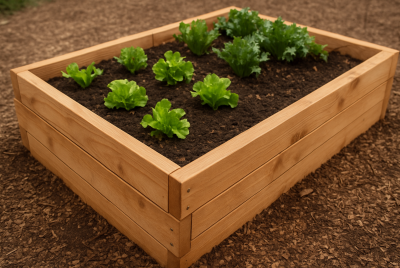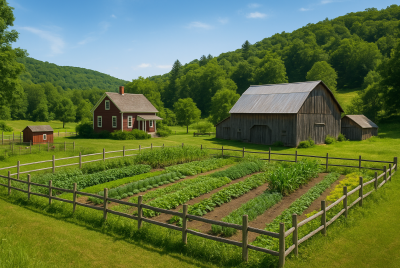Fall Cover Crops for Homestead Gardens: 5 Crops to Improve Soil Over Winter
We may earn a commission for purchases made using our links. Please see our disclosure to learn more.
By late fall, many beds sit bare—and that’s where problems start. Cold rains compact the surface, nutrients wash away, and weeds seize the opening. Come spring, you’re wrestling crusted soil and spending on extra inputs. The fix is refreshingly simple: fall cover crops. Tuck beds in with living roots now, and those plants will shield the surface, feed microbes, hold nutrients in place, and set you up for a faster, cleaner spring.
Why Fall Cover Crops Belong in Every Homestead Garden
Homestead soil works hard. You ask it to stay fertile, absorb heavy rain, bounce back from summer heat, and still produce reliable food. Cover crops help you hit all those targets at once. They create a protective canopy that softens raindrops and keeps the surface from sealing. Their roots stitch the profile together, making soil more crumbly and resilient. When those plants break down, they become organic matter that improves water holding and feeds the below-ground food web. As a bonus, covers mop up leftover nutrients after summer crops so they don’t leach over winter. In spring, you’ll notice fewer weeds, steadier moisture, and a bed that rakes smooth with less effort. That’s the kind of quiet, compounding improvement homesteaders love: small steps now that pay off all season long.
How Fall Cover Crops Improve Soil
Cover crops work on two fronts: biology and structure. Their living roots leak tiny but powerful “root exudates” that feed microbes, which in turn build stable soil crumbs and longer-lasting organic matter. Meanwhile, shoots and roots act like scaffolding—slowing raindrops, reducing crusting, and opening channels for air and water. That’s why winter rye, oats, clovers, vetch, and daikon feel like a reset button by spring: beds stay covered, moisture evens out, and seedlings establish with less fuss.
The USDA NRCS frames these wins as four simple soil-health pillars—keep soil covered, minimize disturbance, keep living roots as long as possible, and diversify species—principles that fall covers naturally deliver as they grow through cooler months. A recent peer-reviewed synthesis pulls the mechanism into focus: across many trials, cover crops lowered bulk density (looser tilth), increased macropores (better drainage and oxygen), boosted soil organic matter, and sped water infiltration—exactly the practical changes homesteaders notice as easier bed prep and sturdier early growth once covers are terminated.

The 5 Best Fall Cover Crops for Homesteaders
1) Winter Rye
Winter rye is the cold-hardy anchor that keeps beds protected through the roughest months. It germinates in cool soil, races to cover bare ground, and weaves a dense root mat that holds structure and soaks up leftover nutrients. By spring, rye’s lush top growth becomes a mulch blanket that suppresses early weeds and steadies moisture. Terminate it at boot stage so residues stay manageable, then slip transplants—tomatoes, brassicas, peppers—right through the flattened mat.
2) Crimson Clover
Crimson clover brings quick, elegant nitrogen to the party. It’s a compact legume that fixes atmospheric N with help from friendly rhizobia, then returns that fertility as tender residues break down. The red blooms invite early pollinators, and the biomass decomposes fast—perfect if you want beds ready for spring greens and roots. Inoculate the seed, mix it with a cereal (rye or oats) for balance, and terminate at early bloom to time the nutrient release.
3) Hairy Vetch
Hairy vetch is your high-octane nitrogen engine. It sprawls to carpet soil, shields it from winter weather, and loads your spring rotation with a serious N bump. Pair vetch with rye to create a self-mulching mat you can crimp or mow when vetch hits first bloom. It’s robust, so plan timely termination and pull any stray volunteers early. With a little management, you’ll trade store-bought fertilizer for homegrown nitrogen.
4) Daikon “Tillage” Radish
Daikon “tillage” radish is bio-tillage without the tiller. Those long taproots drill through tight layers, easing shallow compaction, improving drainage, and leaving tidy channels for spring roots to explore. In cold regions, radish typically winterkills and melts into the soil, leaving a seedbed that warms quickly. In warmer zones, just chop and drop before seed set to lock in the benefits without volunteer issues.
5) Oats + Field Peas Mix
An oats + field peas mix is the friendliest on-ramp for new cover croppers. Oats leap up fast for quick cover, then winterkill neatly; field peas add gentle nitrogen and soft residues that break down in time for early plantings. Together they protect soil, reduce erosion, and set you up for nearly “no-till” spring prep—often just a rake-smooth and plant.
Quick Fall Cover Crops Guide
| Cover crop | Best for | When to sow (before first hard frost) | Spring plan |
| Winter rye | Heavy mulch, weed suppression, erosion control | 4–8 weeks | Crimp/mow at boot stage; transplant through residue |
| Crimson clover | Quick nitrogen, fast breakdown, pollinators | 6–8 weeks (earlier in cold zones) | Terminate at early bloom; great ahead of greens/roots |
| Hairy vetch | High nitrogen, dense groundcover | Late summer–early fall | Terminate at first bloom; pair with rye for living mulch |
| Daikon “tillage” radish | Compaction relief, cleaner seedbeds | 6–10 weeks | Winterkill in cold zones; chop before seed set in warm zones |
| Oats + field peas | Beginner-friendly cover + gentle nitrogen | 6–8 weeks | Oats winterkill; light chop of peas if needed, rake smooth and plant |
Tip: If you plan to direct-seed tiny spring crops (carrots, lettuce), rake a narrow strip clear after termination. For transplants, plant straight through a thin mulch layer.
Planting Windows, Seeding Tips, and Termination (Small-Plot Friendly)
Prep lightly, then plant.
After pulling summer crops, rake out debris and level the bed. Broadcast seed evenly; on small plots, use the back of a rake to press seeds in for good soil contact. Water to jump-start germination.
Blend grasses and legumes
A simple mix—rye + crimson clover or oats + field peas—delivers biomass, weed control, and nitrogen in one pass. Grasses contribute carbon-rich mulch; legumes contribute nitrogen and softer residues that break down faster.
Inoculate legumes
A pinch of rhizobium inoculant on clover, vetch, or peas unlocks reliable nodulation and better nitrogen returns. It’s cheap insurance and pays for itself in reduced spring fertilizer.
Termination timing matters
Winter-killed covers (oats, daikon in cold zones) need almost no spring effort—rake smooth and plant. Hardy covers (rye, vetch, clover) should be cut or crimped at the right stage: vetch and clover at early bloom; rye at boot stage. If you plan to direct-seed tiny crops (carrots, lettuce), create narrow, cleared strips using a rake or hoe. For transplants (tomatoes, peppers, brassicas, squash), plant straight through the mulch.
Give residues a short pause
If you incorporate any biomass, wait two to three weeks before direct seeding. That pause lets microbes begin decomposition and avoids temporary nitrogen tie-up from high-carbon residues.
Scale the seed to your space
Full-bed sowing isn’t the only option. Try “alley covers” in pathways or sow strips on future fallow rows. Even partial coverage builds structure and suppresses weeds at a small cost.

Common Mistakes (and Easy Fixes)
Planting too late
If frost looms, switch to fast germinators like oats or daikon and accept smaller plants that still provide cover and root channels.
Skipping legume inoculant
Don’t. It’s a low-cost step that turns “maybe” into “yes” for nitrogen fixation. Inoculate right before sowing and keep treated seed out of the sun.
Letting rye get away from you
Once rye elongates, residues become ropey and slower to break down. Terminate on time for easier management.
Over-tilling in spring
Heavy tillage undoes structure gains. If you need to incorporate residues, do a shallow pass or use a broadfork to lift and aerate without mixing layers.
Expecting instant payback
You’ll feel improvements quickly, but the bigger dividends arrive as seasons stack. Treat cover cropping like a savings plan—regular deposits compound into noticeably better tilth, fewer weeds, and stronger crops.
Product Picks (Homesteader-Tested Essentials)
Popular, widely available items you can search on Amazon. Choose sizes and brands that fit your beds and climate.
- Winter Rye Seed (Secale cereale) — Cold-hardy biomass maker and weed blanket for spring.
- Crimson Clover Seed + Rhizobium Inoculant — Nitrogen fixer that breaks down quickly and feeds early crops.
- Hairy Vetch Seed — High-N legume; pair with rye for a self-mulching spring mat.
- Daikon “Tillage” Radish Seed — Bio-tillage taproots that winterkill cleanly in cold regions.
- Hand-Crank Seed Spreader — Even broadcasting without guesswork on beds and paths.
While you’re planning fall soil care, consider energy resilience for winter projects too—here’s a helpful guide to the best solar generator for off-grid living.
Conclusion
Fall cover crops are the rare win-win for homestead gardens: they protect soil now and feed it later. Start simple—oats + peas if you’re new, or rye + crimson clover if you want spring mulch and nitrogen. Inoculate your legumes, terminate on time, and let residues do their quiet work. Season by season, you’ll notice looser tilth, fewer weeds, steadier moisture, and spring beds that welcome your seeds and transplants without a fight. Put roots in the ground this fall, and your future self will thank you when everything wakes up ready to grow.
FAQs
1) Which fall cover crop is best for beginners?
Try oats + field peas. Oats establish fast and usually winterkill, leaving a tidy surface. Peas add gentle nitrogen and soft residues that break down in time for early spring planting.
2) Can I direct-seed spring veggies into cover-crop residue?
Yes—with a small adjustment. Rake a narrow strip clear for tiny seeds like carrots or lettuce. For transplants (tomatoes, peppers, brassicas), plant right through a thin mulch layer.
3) Do I still need fertilizer after legumes?
Often less. Crimson clover and hairy vetch fix nitrogen that becomes available as residues decompose. Track results and reduce added N carefully rather than all at once.
4) How late is too late to sow fall cover crops?
Plan to sow about six to eight weeks ahead of your first hard freeze. If you’re running late, choose fast germinators like oats or daikon and accept smaller plants that still protect soil.
5) Will cover crops tie up nitrogen in spring?
High-carbon grasses can briefly. Terminate a couple of weeks before direct seeding, blend grasses with legumes, or transplant heavy feeders through a surface mulch to keep growth moving.




